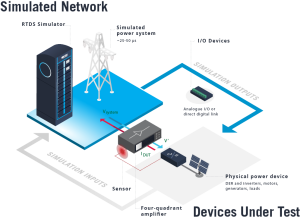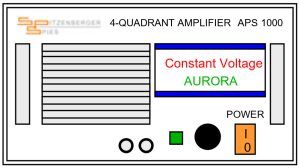PHIL provides an unparalleled opportunity to characterize the behavior of power hardware prior to installation in the network
Power Hardware-in-the-Loop (PHIL) testing involves connecting real power hardware to the simulated network in a closed loop.

Using the RTDS Simulator for PHIL puts you at a technical advantage
User support and guidance for smoother experiment setup:
We have the strongest support program in the industry and are committed to equipping our users to build stable, valid PHIL simulations and interfaces. Users have access to a report detailing our in-house PHIL experiments, the amplifier selection process, interface methodology, stability, and delay.
Custom built PHIL models for a simpler, more stable interface

Complete your PHIL testbed with a four quadrant amplifier
PHIL requires a third-party four quadrant amplifier, which can both source and sink real and reactive power, to be placed between the real-time simulator and the power device being tested. There are many amplifiers available with varying power ratings, bandwidth, response time, harmonic distortion, and input/output impedances – the amplifier should be selected carefully based on the experimental requirements.
The RTDS Simulator has been successfully used alongside a large variety of four quadrant amplifiers.
